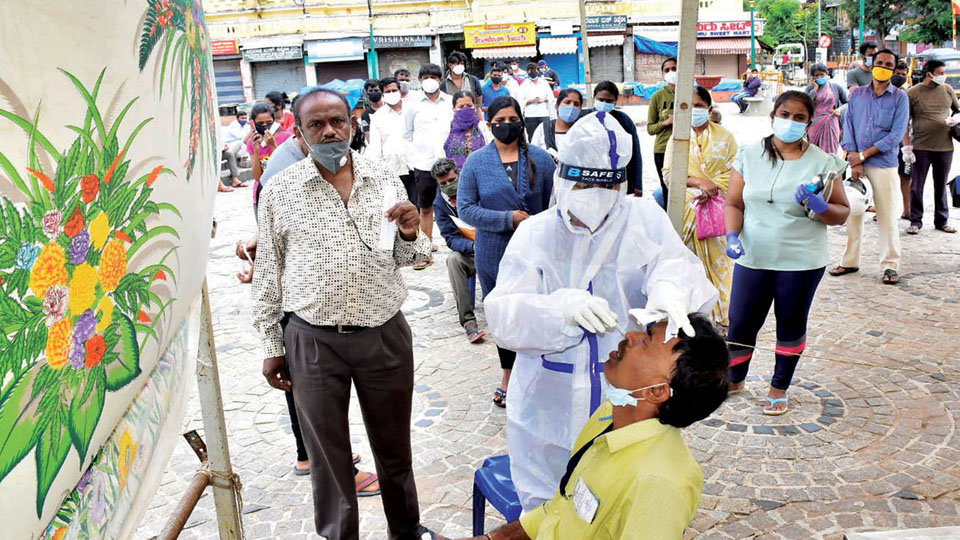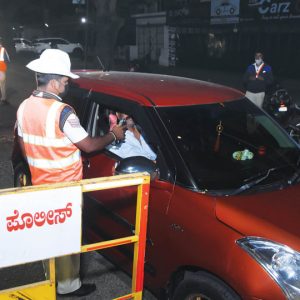By Dr. S. M. Ravindranath, MBBS, MS, MBA(Hosp.Man), FRCS(Ire), FRCS(Glasg), FIAGES, PGCHPE(UK)
Covid-19 has affected India severely. The magnitude of the second wave caught everybody by surprise and was more like a tsunami sweeping across. The vastness of the country makes us to have multiple peaks at different time periods and different regions. It appears like we are seeing a downward spiral of the covid second wave.
As we enter an important phase in this pandemic we should put in place strategies to prevent/minimise a third wave in our country. It is noticeably clear that a people-centric and people-endorsed public health measures along with massive vaccination drive would go a long way in preventing or mitigating future waves. Patience and adherence to these basic principles are a necessity. If all of us unite and follow the guidelines we can “defeat Covid.”
Why do covid variants happen ?
The survival instinct inherent in all forms of life on the planet makes it imperative for us to keep changing (mutate); the virus is no different. It keeps on mutating and what do we have with us — branded variants which are > 50% more infectious (transmissibility). The virus mutates rapidly about twice in a month. But when the mutating virus has genetic sequence change, it is called a variant. The only way to reduce opportunity for new variants to increase either transmission or serious illness is to cut the chain of viral transmission.
The WHO terms these variants as: 1. Variant of Interest (strains with resistance to treatment), 2. Variant of Concern (strains with increased transmissibility and severe infection), 3. Variant of High Consequence (strains which are becoming resistant to medical measures).
The variants recognised and devastating now are the ones linked to increased infectivity and re-infection, that is, UK variant (B.1.1.7), Brazil variant/Japan (P.1), South African variant (B.1.351), Indian variant (B.1.617 — 1,2,3 strains). There are many more like the California variant (B.1.427 & 429) etc. All variants recognised so far are Variants of Interest or Concern and no variant so far is classified as of High Consequence.
Why do waves occur?
The well-known reason for multiple waves is the mutation in the virus and the variant it generates. The variants become significant and of concern when the virulence increases. There are numerous mutations happening all the time but only a few become dangerous. This affects scores of people increasing the mortality and morbidity.
Are there lessons from past pandemics?
Definitely yes. The Influenza pandemic of 1889-92, the Spanish Flu pandemic of 1918-19 and the Influenza pandemic of 2009, all had minimum 3 waves and some 4. The first wave affected the most vulnerable. The second wave was deadly and affected the younger adults. The third wave affected the rest of the populace and children but of lesser intensity. The “pandemic fatigue” and “complacency” to follow socially acceptable Covid- appropriate behaviour (social vaccine) were the reasons for the deadly waves then and probably now as well.
The history of pandemics is replete with data on spread, misery and deaths. They all had 3 or 4 waves and behave in a predictable pattern. The Spanish Flu has a lot of parallels with Covid-19. So, we may expect another wave but if we are prepared, we can prevent or reduce the intensity. More importantly we can augment the system and be ready to tackle it effectively.
What can we do?
Avoiding or reducing the impact of a COVID 3rd wave needs a multi-pronged approach.
1. Vaccination: The vaccine is the most potent tool against covid-19. Relying on vaccines is the most rational way to prevent the 3rd wave and indeed further waves. Vaccines are injections of hope and the way out of the pandemic. There are many challenges now including free availability. The administration is working on scaling up production, importing WHO approved vaccines, re-purposing existing vaccine producers, licensing new units etc. We have the experience and expertise to vaccinate at rapid pace and cover everybody; if all this happens in coming months it would help defer the next wave.
It is a collective responsibility to create awareness of the benefits of vaccination and eliminate misinformation. Steadily reduce the vaccine hesitancy. Ramp up the rhetoric of how vaccination protects people from serious covid disease or prevent ICU necessity and death. Of course, the long-term goal of a vaccination programme would be to get rid of lockdowns, social distancing measures and the covid virus. All vaccinations give you immunity and protection for sure but the efficacy varies a bit. So, accept whatever vaccine is on offer at present.
The other concern is about the side-effects or adverse reactions of the vaccines. It is rare (reported incidence is around 1 in 1 million vaccinations) and so should not be an issue. Booster vaccine shots may be on the horizon to keep the virus at bay when it becomes endemic.
2. Public health measures: These are proven methods that help prevent transmission of the virus. They are like social vaccine and necessary before and even after vaccinations. This has been repeatedly stressed but unfortunately the compliance is low. The 4 important measures all of us know are:
Wearing a mask outside definitely and at home if there are covid-19 patients in isolation, suspected or quarantined. The mask should cover the nose and the mouth.
Maintaining a social distance of 2 meters always (when shopping, in offices etc.). This again is seldom practiced both in urban and rural areas despite us knowing that it is essential. This requires a conscious social behavioral change for many of us.
Hand hygiene: Frequent washing with soap (6 to 8 times at least) or sanitisers.
Avoid gatherings or even better, is to stay at home.
3. Health infrastructure: The second wave has given us insights into various challenges. Now is the time to plan adequately and put things in perspective be it equipment, human resource, other medical resource like medications and oxygen. Review the guidelines and constantly update it. Maintain uniformity and implement rigorously. Plan also for child specific care. The long-term goal should be to augment and strengthen healthcare services.
4. Testing: Ramp up testing, tracing and isolation. A successful containment strategy is to constantly scale up and increase the coverage. To prevent a 3rd wave, the case positivity rate needs to be brought down in the districts to less than 5% and less than 1% in the villages.
5. Avoid Fatigue & Complacency: Let us resolve to follow the protocols and guidelines advised by the Government. Beware of complacency and the disastrous consequences from it and the avoidable suffering. Let us adhere to the basics for a while longer or until majority (80%) are vaccinated. Stopping covid-19 is in our hands. Let’s do it.
[The author is a Consultant Surgeon at Vivekananda Memorial Hospital, Saragur, a Unit of Swami Vivekananda Youth Movement, Mysuru]








Recent Comments